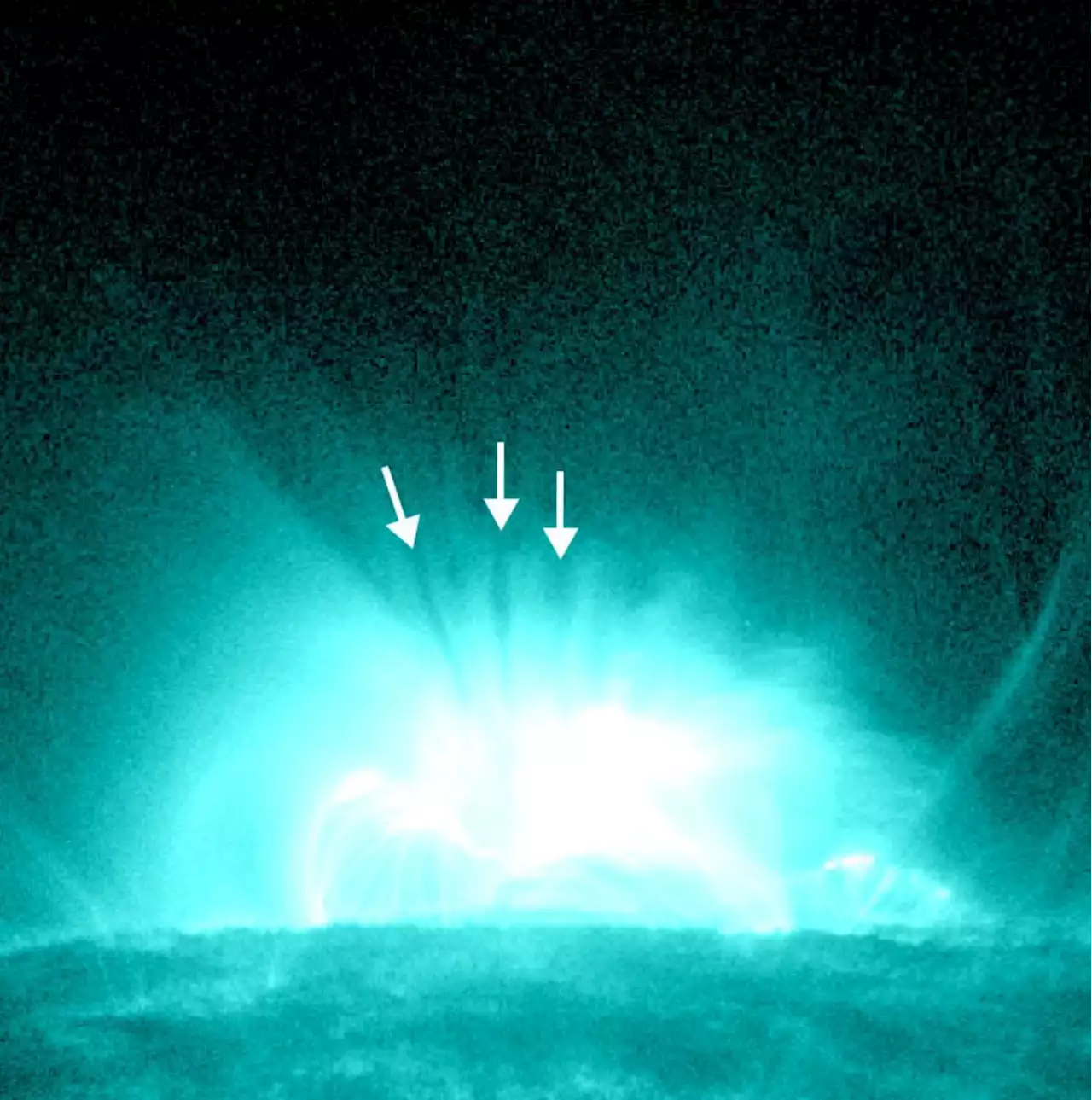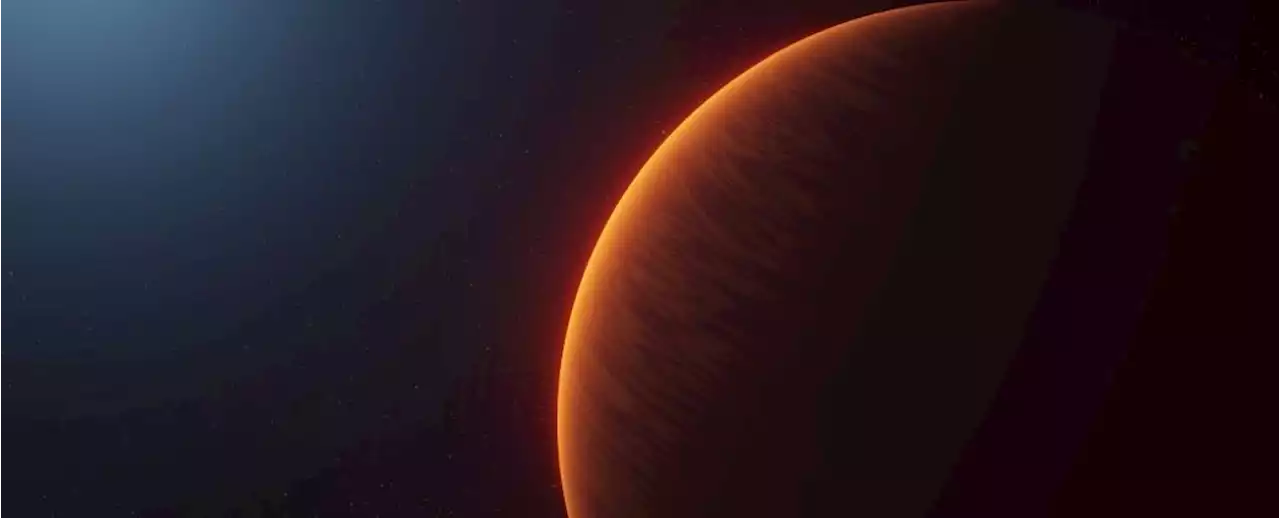Mysterious object unlike anything astronomers have seen before
Spinning neutron star illustration .A team mapping radio waves in the Universe has discovered something unusual that releases a giant burst of energy three times an hour, and it's unlike anything astronomers have seen before.The team who discovered it think it could be a neutron star or a white dwarf -- collapsed cores of stars -- with an ultra-powerful magnetic field.
The object was discovered by Curtin University Honours student Tyrone O'Doherty using the Murchison Widefield Array telescope in outback Western Australia and a new technique he developed. Objects that turn on and off in the Universe aren't new to astronomers -- they call them 'transients'.ICRAR-Curtin astrophysicist and co-author Dr Gemma Anderson said that"when studying transients, you're watching the death of a massive star or the activity of the remnants it leaves behind."
Dr Hurley-Walker said the observations match a predicted astrophysical object called an 'ultra-long period magnetar'.
Norge Siste Nytt, Norge Overskrifter
Similar News:Du kan også lese nyheter som ligner på denne som vi har samlet inn fra andre nyhetskilder.
 Astronomers Propose New Explanation for Finger-Like Features Seen in Some Solar Flares | Sci-News.comDr. Chengcai Shen from the Harvard & Smithsonian Center for Astrophysics and colleagues have analyzed images of the so-called supra-arcade downflows captured by the Atmospheric Imaging Assembly (AIA) onboard NASA’s Solar Dynamics Observatory.
Astronomers Propose New Explanation for Finger-Like Features Seen in Some Solar Flares | Sci-News.comDr. Chengcai Shen from the Harvard & Smithsonian Center for Astrophysics and colleagues have analyzed images of the so-called supra-arcade downflows captured by the Atmospheric Imaging Assembly (AIA) onboard NASA’s Solar Dynamics Observatory.
Les mer »
 The Atmosphere of This Extreme Exoplanet Has an Intriguing Similarity to EarthAstronomers have just peered into the atmosphere of one of the most extreme exoplanets ever discovered.
The Atmosphere of This Extreme Exoplanet Has an Intriguing Similarity to EarthAstronomers have just peered into the atmosphere of one of the most extreme exoplanets ever discovered.
Les mer »
 Bentley's Latest Offering Is A $15k Road Trip To A Distillery In Scotland | CarscoopsParticipants get to eat at Michelin-star restaurants and stargaze with Scotland's Astronomer Royal
Bentley's Latest Offering Is A $15k Road Trip To A Distillery In Scotland | CarscoopsParticipants get to eat at Michelin-star restaurants and stargaze with Scotland's Astronomer Royal
Les mer »
 Hubble finds a black hole igniting star formation in a dwarf galaxy -- ScienceDailyOften portrayed as destructive monsters that hold light captive, black holes take on a less villainous role in the latest research from NASA's Hubble Space Telescope. A black hole at the heart of the dwarf galaxy Henize 2-10 is creating stars rather than gobbling them up. The black hole is apparently contributing to the firestorm of new star formation taking place in the galaxy. The dwarf galaxy lies 30 million light-years away, in the southern constellation Pyxis.
Hubble finds a black hole igniting star formation in a dwarf galaxy -- ScienceDailyOften portrayed as destructive monsters that hold light captive, black holes take on a less villainous role in the latest research from NASA's Hubble Space Telescope. A black hole at the heart of the dwarf galaxy Henize 2-10 is creating stars rather than gobbling them up. The black hole is apparently contributing to the firestorm of new star formation taking place in the galaxy. The dwarf galaxy lies 30 million light-years away, in the southern constellation Pyxis.
Les mer »
 Scientists find previously unknown jumping behavior in insects -- ScienceDailyA team of researchers has discovered a jumping behavior that is entirely new to insect larvae, and there is evidence that it is occurring in a range of species -- we just haven't noticed it before.
Scientists find previously unknown jumping behavior in insects -- ScienceDailyA team of researchers has discovered a jumping behavior that is entirely new to insect larvae, and there is evidence that it is occurring in a range of species -- we just haven't noticed it before.
Les mer »
![]() Scientists achieve key elements for fault-tolerant quantum computation in silicon spin qubits -- ScienceDailyResearchers have achieved a key milestone toward the development of a fault-tolerant quantum computer. They were able to demonstrate a two-qubit gate fidelity of 99.5 percent -- higher than the 99 percent considered to be the threshold for building fault-tolerant computers -- using electron spin qubits in silicon, which are promising for large-scale quantum computers as the nanofabrication technology for building them already exists.
Scientists achieve key elements for fault-tolerant quantum computation in silicon spin qubits -- ScienceDailyResearchers have achieved a key milestone toward the development of a fault-tolerant quantum computer. They were able to demonstrate a two-qubit gate fidelity of 99.5 percent -- higher than the 99 percent considered to be the threshold for building fault-tolerant computers -- using electron spin qubits in silicon, which are promising for large-scale quantum computers as the nanofabrication technology for building them already exists.
Les mer »
